Market newsletter March 16 - 2023

The FX markets are on edge, as jittery as 2 cups of coffee & an Adderall since the revelation overnight that Credit Suisse has tapped into a Swiss National Bank facility borrowing CHF50bn ($57.3 billion) through a Covered Loan Facility and a short-term liquidity facility, both collateralized by "high-quality assets"
The word "high-quality assets" are not my words but theirs https://www.credit-suisse.com/about-us-news/en/articles/media-releases/csg-announcement-202303.html
Credit Suisse is a swiss banking and financial service with operations in over 50 countries. It's one of the largest banks in Switzerland. The Swiss National Bank (SBN) is the central bank of Switzerland. The Swiss National Bank is responsible for the monetary policy of the country.
This action is to “pre-emptively strengthen its liquidity as it moves to stem a share price plunge”... basically Credit Suisse borrows the money to prevent further decline of its share price.
Credit Suisse announced they would buy certain OpCo senior debt securities for up to CHF 3 billion in cash.
But also, what can we get out of this news?
It seems like Credit Suisse is also preparing for potential economic uncertainties and taking steps to ensure they'll remain solvent.
Later today, the European Central Bank (ECB) faces a difficult decision as market conditions are challenging their plants to increase interest rates by 50 bps.
Tip: Use the play button to listen to the article instead of reading!
Goldman Sachs Raises Recession Odds to 35% as near-term economic
Goldman Sachs is putting the chance that the US economy will go into recession in the next 12 months at 35%, which is 10pp higher than before.
This is because the effects of small bank stress on the economy are becoming less clear in the short term. Even though there are some good signs of growth, it is still not as much as it could be.
If you're enjoying this newsletter, consider signing up for a premium subscription, a discord discussion server will be launched soon as an extra for premium subscribers.
Revised 2023 GDP Forecast in Response to Small Bank Stress
Goldman Sachs US economists have changed their forecast for 2023 Q4/Q4 GDP growth by 0.3pp to 1.2%. This was done because small banks are now responsible for up to 80% of loans for commercial real estate, 45% of loans for consumers, and 60% of loans for residential real estate.
Their US economists think the predicted drop is due to a decrease in lending and a tightening of lending standards. This will have the same effect on growth as a 25–50bp increase in interest rates. Also, they have changed their minds about how likely the US economy will go into recession in the next 12 months, and the number they came up with is now 35%.
Their Activity Indicator is at -0.3% in February and is flat on a 3-month annualized basis. Their business survey trackers, on the other hand, averaged 52.0 in February, which is slightly expansionary. They think that the growth of domestic final sales could be more than +3.0% for Q1.
But over the next few years, this growth will still have to deal with the job market and inflation as the Fed works to bring inflation down to its target of 2%.
Global Banking System Remains Fragile
The recent failure of Silicon Valley Bank and the pressure on Credit Suisse, one of the world's 30 Global Systemically Important Banks (G-SIBs), has exposed the fragility of the global banking system. The collapse of Silicon Valley Bank raised questions amongst investors about the health of the US banking system. The pressure on Credit Suisse has spotlighted the European banking system.
The support from the Swiss National Bank (SNB) has reassured investors that Credit Suisse is appropriately capitalized and can withstand further shocks
The main question now is whether such measures are enough to reassure investors enough as they fear the possibility of an unstable global banking system.
The implied options volatility in the US treasury market is now higher than in March during the Covid pandemic.
Investors are likely to remain wary and continue to seek safety in trades such as long Japanese yen.
The Japanese yen is known as a "safe haven" currency because its value tends to stay the same or even go up when people are afraid to take risks. Investors seek shelter in safe havens during periods of intense market volatility and global uncertainty, such as global pandemics or geopolitical shifts like Brexit.
The Norwegian krone is performing poorly. Overall,
The European Central Bank's decision today should also be closely watched. A rate hike can lead to more volatility in the currency markets.
DXY trading range is 103 -106, and a potential upside can come if there's further stress in the dollar wholesale funding market.
If financial stresses continue to worsen and the economy becomes more volatile, investors will look for a safe place to park their money.
In this uncertain environment, Goldman Sachs believes that the US Dollar, along with the Japanese Yen and Swiss Franc, will be the safest and most secure havens.
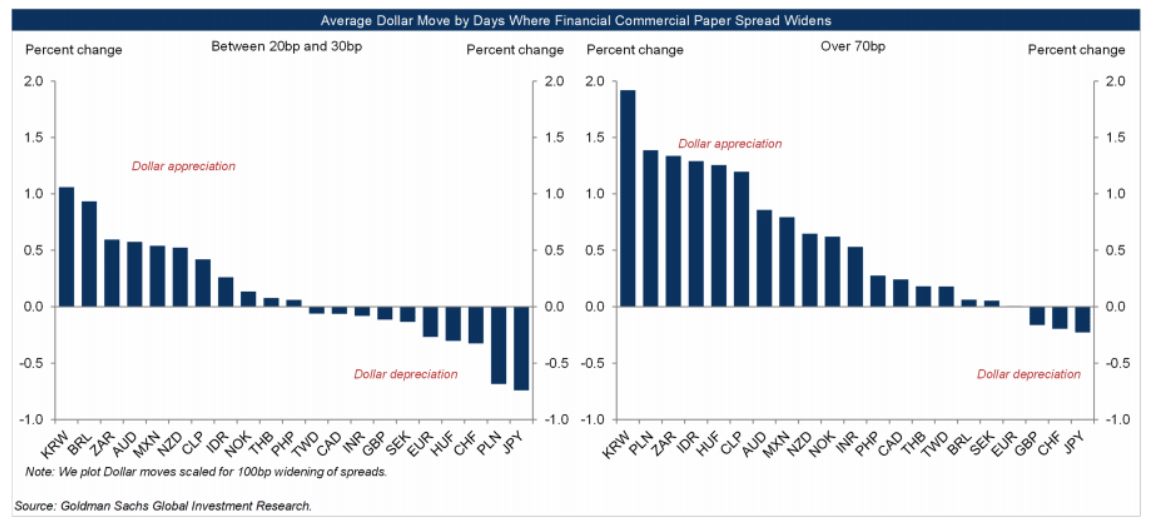
The newsletter doesn't end here; you can scroll down for more reading. However, consider a premium subscription if you enjoy the reading and find value in it.
Newsletter Premium Subscription
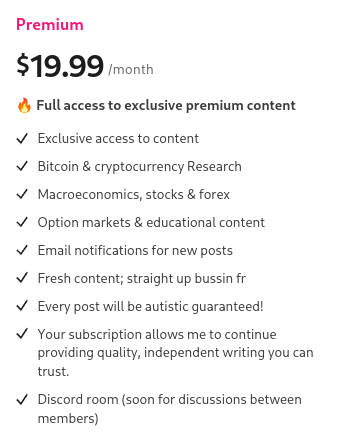
Premium subscription
Tired of seeing low-effort content on Twitter with random people posting lines on a chart?
Maybe subscribing to this newsletter is something for you to gain an edge over the market.
Also, read my free medium articles: https://medium.com/@romanornr/
Full access to exclusive premium content
Subscribe, and get a competitive edge over the market.
Take the first step to kick your wife's boyfriend out of the house & stop getting liquidated.
ECB Rate Announcement
The clock is ticking toward today's ECB rate hike announcement, and investors are looking with anticipation at what the decision will be.
A week ago, inflation data strongly suggested the ECB would hike rates by 50bps in March. Now that the financial sector is in chaos, investors aren't sure what is the right thing to do.
The ECB's decision to raise rates was based on inflation data, and recent inflation data has supported this decision. However, the ECB's plan is at risk due to the ongoing turmoil in the financial sector, as policymakers must consider the consequences of tightening monetary policy in an unstable environment.
Even though the OIS curve only gives today's meeting a 28bps chance, several analysts have predicted outcomes throughout the dovish-hawkish spectrum, depending on how they weigh the importance of historical evidence with the value of future guidance.
If the ECB is confident that going ahead with its planned rate hike won't hurt the financial sector too much, then it is likely that the central bank will go ahead with its planned 50bp rate hike. But if the ECB isn't sure that the change won't cause too much trouble, the central bank could decide to keep rates the same or even lower them.
The potential impact of the ECB’s decision on the euro is also important to consider. If the ECB’s rate hike is seen as a signal of confidence in the health of the eurozone banking system, then this could potentially lift the euro.
However, suppose the ECB decides to proceed with the rate hike in a still fragile environment for the European banking sector. In that case, this could be seen as a sign of risk for the financial stability of the area, and this could potentially lead to a negative impact on EUR/USD.
Goldman Sachs also thinks the market would not respond well to a 50bps hike today as that would be too aggressive. They suggest a 25 basis point increase would be the right message to send and will likely result in a more positive response from the markets. The ECB will likely opt for a dovish 50 basis point increase, signaling a dovish stance on the interest rate outlook.
European Banks Rebounding?
According to Citibank, European banks have been having a hard time, but things seem to be getting better. Investors are letting out a sigh of relief now that the banking sector is getting back on its feet with the government's help.
Euro Stoxx 50 futures have already increased by 2.3%, which shows that investors are starting to feel better about the market again. Even the funding markets, which used to be very cautious, are starting to loosen up now that some of the immediate risks are going away.
The central banks know this, so they have been cutting rates to make sure the situation doesn't get worse. But while this will help the markets, the uncertainty in the banking sector could hurt companies that rely a lot on debt financing as lending standards start to get tighter. This could make the current slowdown in the economy worse and force central banks to take more cautious policy steps.
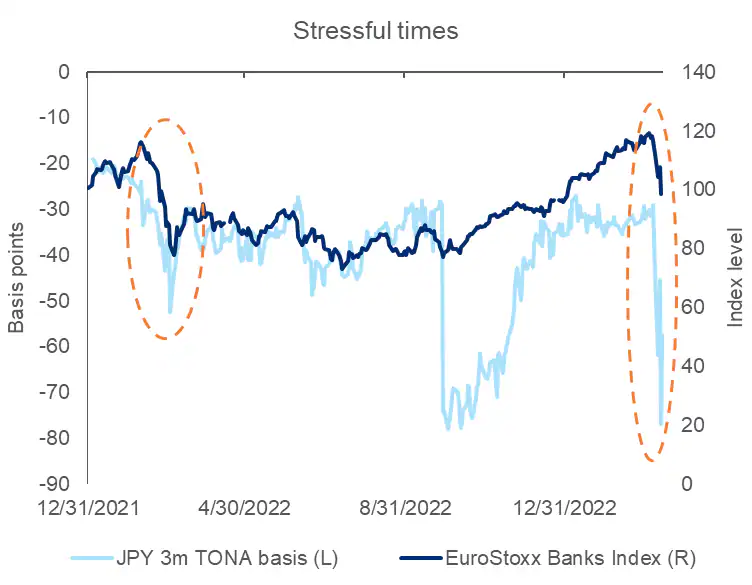
By the way, If you're looking into trying to trade Forex, US equities markets, commodities, and CFDs, you should check out PrimeXBT.
PrimeXBT is a crypto-based platform that enables traders to access multiple assets and markets, including cryptocurrencies, stocks, commodities, CFDs, and forex.
PrimeXBT is an online broker that allows traders to trade with leveraged trading, offering up to 1:1000.
With PrimeXBT, traders can open and close positions quickly.
The minimum deposit is about $10, and no KYC is required. PrimeXBT users can buy Bitcoin, USDT, and USDC using a credit card in the client dashboard.
I have been using PrimeXBT to test out as I've been looking for a broker to trade the SPX500, Forex, and commodities.
Here is my advice, as I've been testing. I prefer not to use Bitcoin as my collateral but instead USDT or USDC.
As bitcoin can be volatile and correlated, your collateral can go down as bitcoin goes down, so risky business. That's why I prefer using stablecoins as collateral.
Make sure to fund either the USDT or USDC instead of margin BTC.
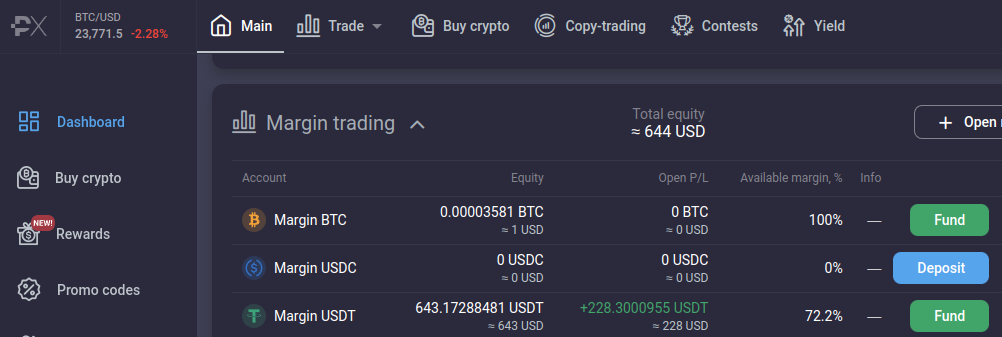
When you're using stablecoins as collateral, it's easier to place a stoploss and see how much you will be losing. This might be slightly off due to spread etc.
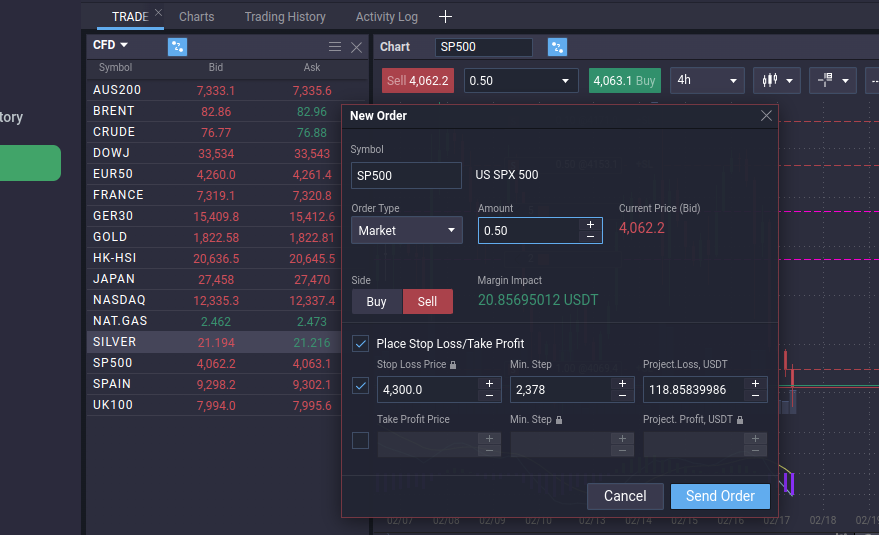
When having a position open, it looks like this.
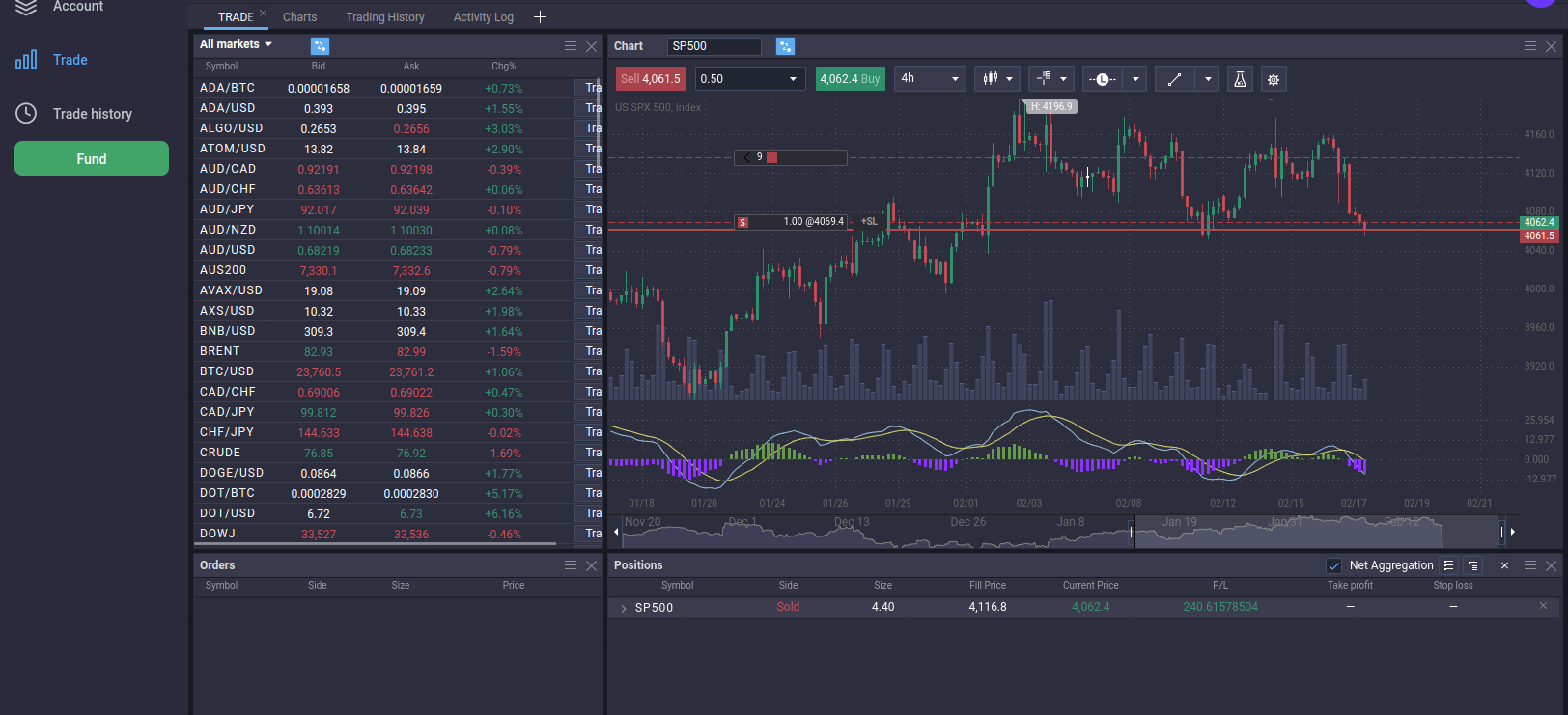
I used multiple orders over a few days, and you can close each trade if you like by pressing the "x" button.

So if you've been following my newsletter for a while, you know I cover legacy markets, options, cryptocurrency, Forex, commodities, etc.
Many of you haven't been able to profit due to not having access to trading stocks/CFDs/commodities.
I suggest trying out PrimeXBT; I have heard about positive experiences with PrimeXBT from other traders.

My referral link for PrimeXBT: https://u.primexbt.com/rnr
Depending on the deposit amount, you can receive up to a $7000 bonus when registering with my referral link. Note that's the maximum bonus.
Promo code: rnr
I recommend creating an account and playing with $300 - $500 or an amount you don't care too much about to practice first.
Don't take it too seriously, as you're just practicing. It's important to also look at legacy markets since everything is connected.
Try to backstop this one
If you missed the "backstop reference," please read my previous newsletter about:
"Bank Term Funding Program (BTFP)," which is basically a bailout. They don't want to call it a bailout officially.
The bailouts are a "Special Financial Operation," just like Putin calls the war a "Special Military Operation"

Bonds are important for the global economy because they are a stable way to store value and a reliable way for businesses, governments, and other organizations to get money. Analysts need to pay close attention to the bond market and understand how it can affect the economy as a whole.
The bond market is very volatile right now, with the MOVE (Merrill Option Volatility Estimate) index reaching its highest level since 2008 just recently. This means that the market is pricing daily changes of about 12 basis points or more, which is a lot more than usual. So, investors and analysts are in a tough situation where they need to take extra steps to protect themselves from volatility risk.
The volatility of the bond market over time is one way to look at it. The chart shows the MOVE index from 2013 to 2020, when the recent rise in volatility will be clear. The chart also shows that bond volatility started going up for real in the summer of 2020, after a few months when things were pretty calm.
Bond volatility measures how much a bond's price changes over time. It is a way to gauge how uncertain or risky the cash flows from a bond are.
When the volatility of a bond goes up, it means that the market is pricing in a higher level of risk or uncertainty about the cash flows from that bond.
In other words, a rise in bond volatility means that the market is pricing in a higher level of risk or uncertainty about the cash flows from a bond.
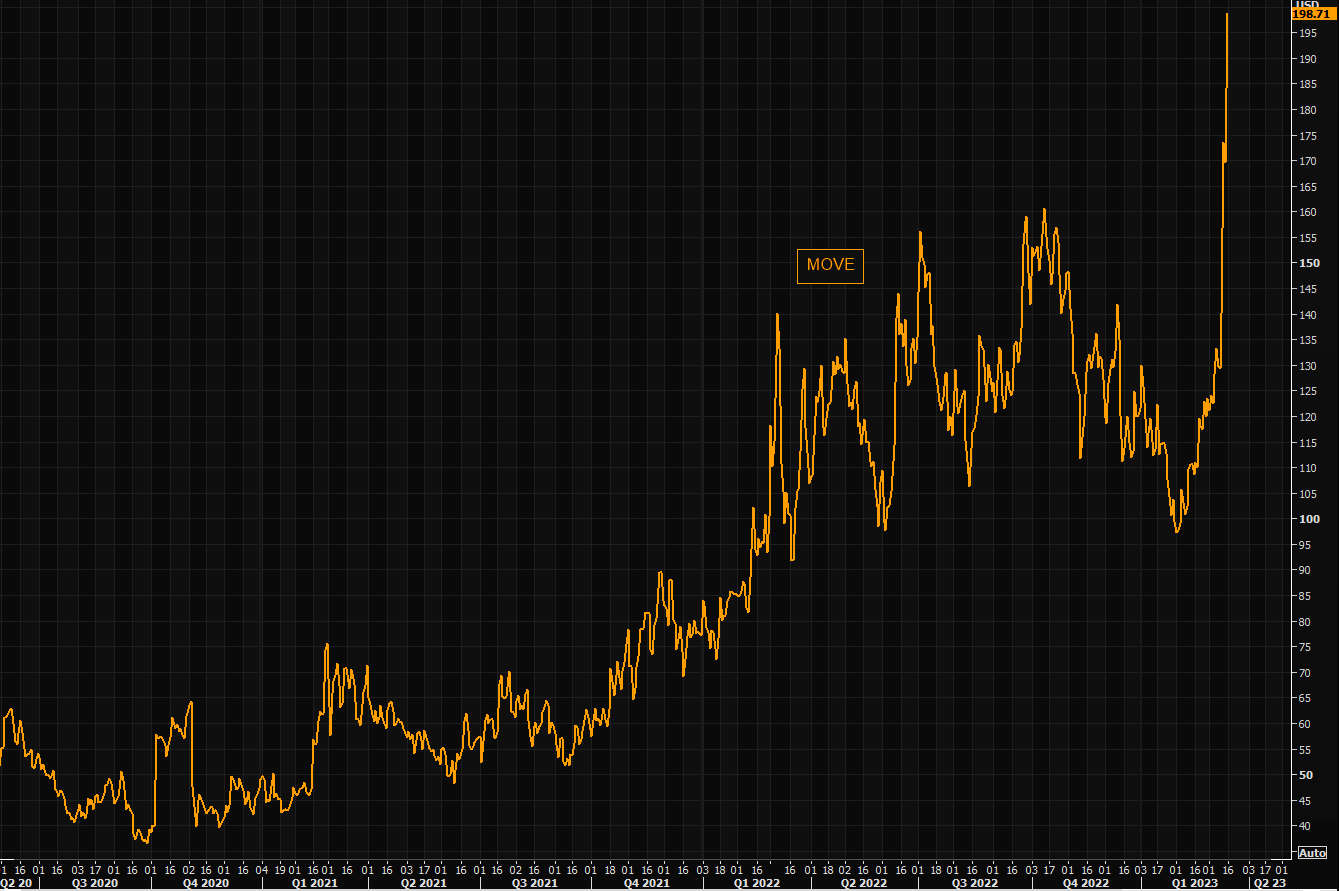
Along with the MOVE index, it is important to consider how the bond market affects the stock market.
Bond volatility continues to indicate that the market is broken, despite Credit Suisse and stocks still being resilient. This means that investors should think about the risks to both the bond market and the economy as a whole.
Given how the bond market is right now and how it affects the global economy, analysts need to think about the effects of their decisions and develop ways to protect themselves from volatility risk. This could mean spreading out investments, controlling risk, and keeping a close eye on the bond market. Analysts should also look for ways to lower the risks of investing in the bond market, like taking advantage of opportunities to hedge and spreading their exposure across different types of assets.
Overall, the bond market is in a bad place because it is so volatile, and we need to be aware of the risks and prepare for them.
ByBit Deposit blast-off up to $30k
Sign up to Bybit with my referral link: https://partner.bybit.com/b/PA0ON66G6776
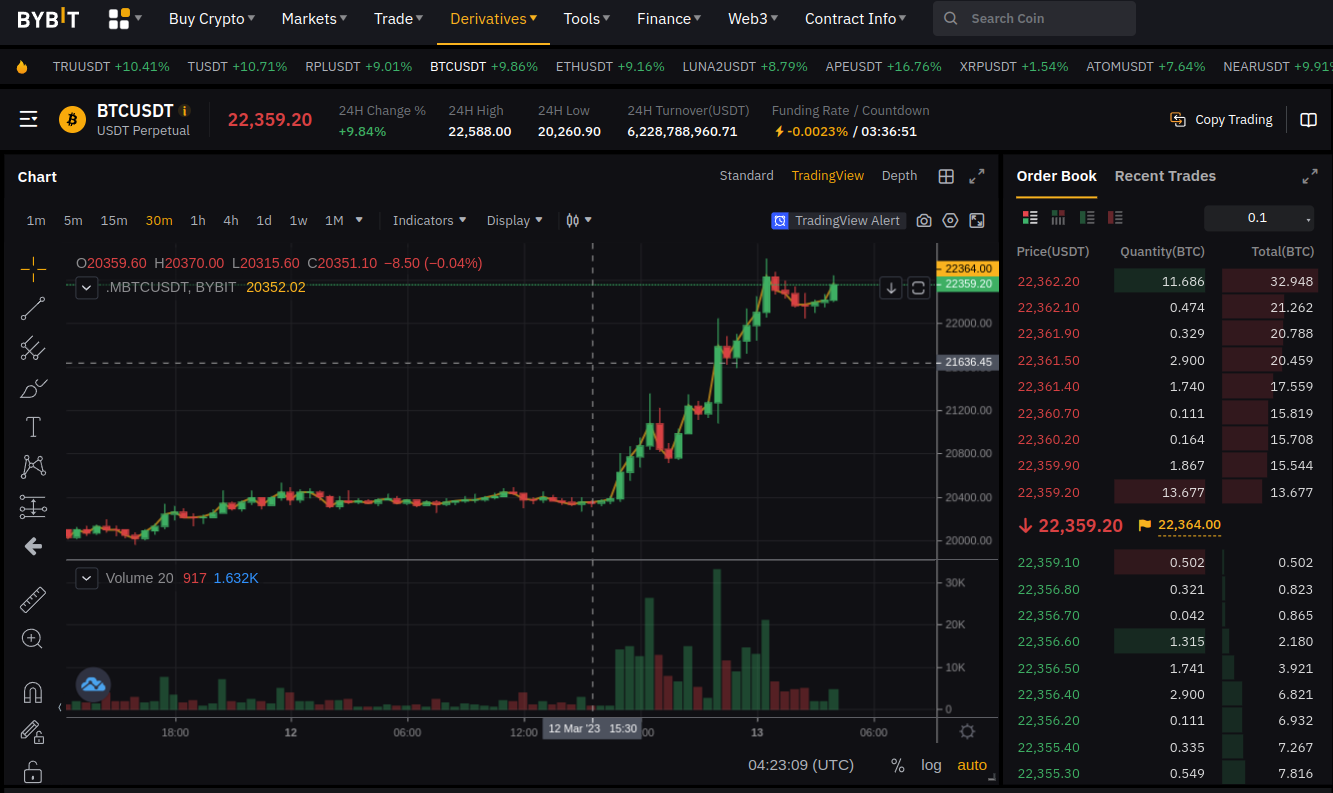
Gtrade
I've noticed this interesting DEX. So gTrade has a friendly UI but also has forex and stocks. I am still playing with the DEX. I recommend using the Polygon network to trade on the.
It's a decentralized alternative to PrimeXBT. The difference here is that you can trade decentralized using Polygon & Arbitrum.
There's no SPX500 to trade, but you can trade SPY, also stocks such as Google, Tesla, etc
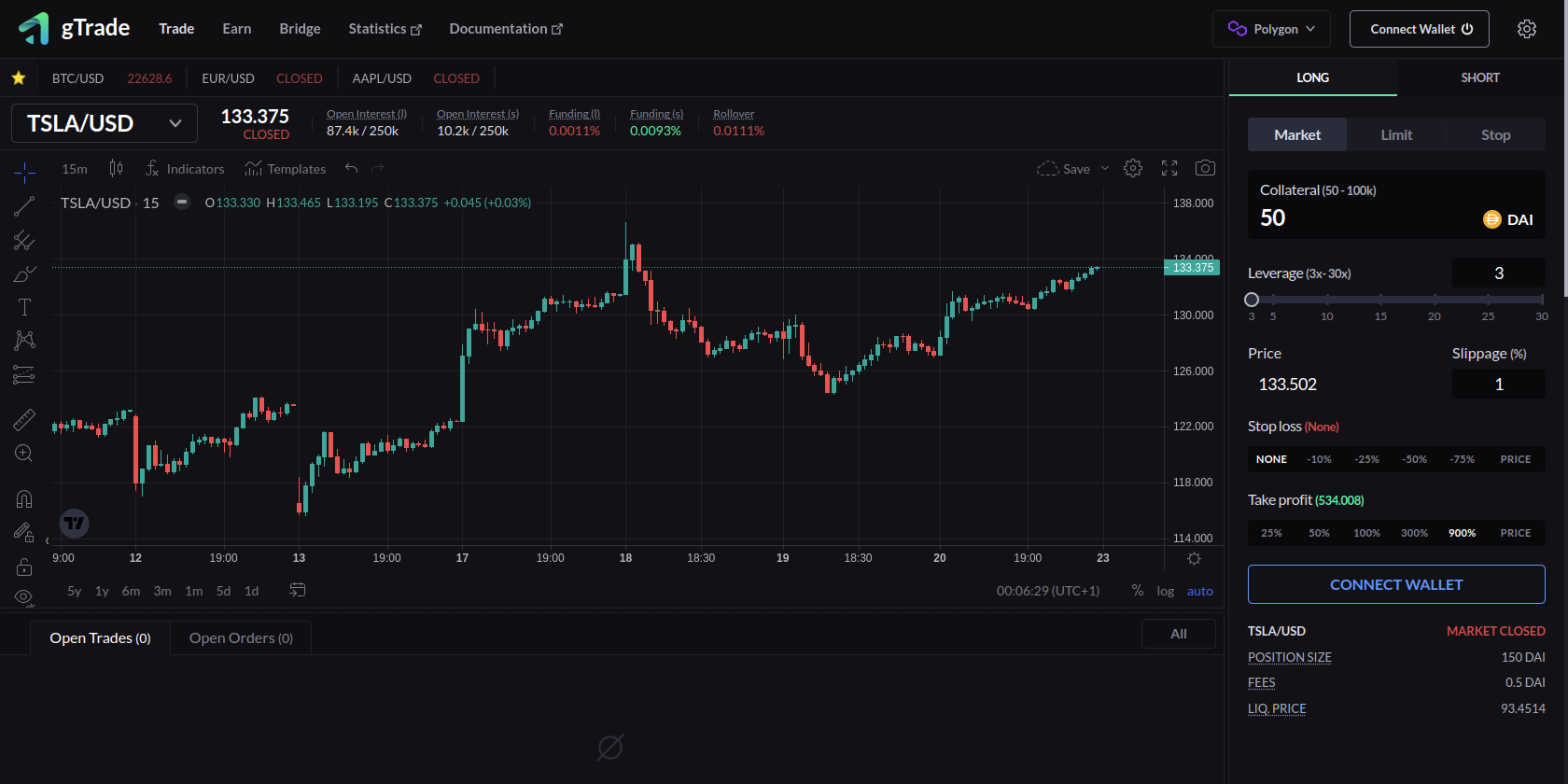

Again, switching from network and bridging is easy with Blockwallet
link: gains.trade/referred?by=romano
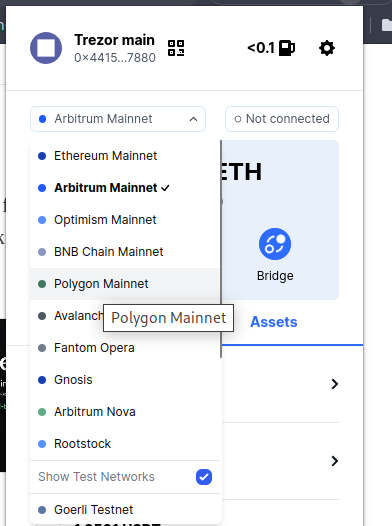
If you like trading on chain, go for Gtrade, but if you prefer a centralized exchange, choose PrimeXBT.
I would recommend practicing on PrimeXBT since there are no TX fees, and you can play with small amounts since there are no gas fees, etc.
On Gtrade, however, your leveraged trades are isolated. That's a huge benefit! If a bank intervenes, at least not, your entire account will be blown up when the price goes against you overnight or gaps up/down.
Blockwallet
I've been recommending Blockwallet in several tweets.
I made the switch from Metamask to Blockwallet.
The user interface and functions are much better; it works better with my Trezor and switching between accounts. Extra privacy, flash bot protection & anti-phishing. You can also import your Metamask seed, etc.
However, I've seen one of their latest tweets, BlockWallet has a token called "BLANK"
Kicking off the new year with some heat - the $BLANK token burn 🔥 pic.twitter.com/rm83xOo0wt
— BlockWallet 🔲 (@GetBlockWallet) January 16, 2023
If I were a betting man, which I am. I will assume that Blockwallet users are eligible for a nice airdrop. I would recommend installing Blockwallet and making some transactions.
You can export your Metamask seed and import it into Blockwallet. As some people think, there's no need to reshuffle your assets. Some people don't want to switch because Blockwallet has no mobile app right now. It doesn't matter. You can install Metamask or 1inch wallet on your phone and import your seed on your mobile wallet, which is not Blockwallet.

Chrome extension link: https://chrome.google.com/webstore/detail/blockwallet/bop
Apex Dex by ByBit
Reminder Apex incentive program, which pays you to trade and keep tour trade open, is ongoing.
They pay rewards to keep that position open lmao
— Romano (@RNR_0) January 12, 2023
Grand idea (however, maybe it won't work)
Use 1 wallet to long x amount
Use 1 wallet to short same amount
Farm rewards neutral?
Discount ref link code: https://t.co/JsJlHH5k3s
Ref code = 46
disclaimer: I hold 1 ApeX OG NFT pic.twitter.com/SgtbrREWS6
Think I can close it for a moment now
— Romano (@RNR_0) January 16, 2023
I like trading on Apex. I get rewards in BANA tokens as a reward
Basically, 1/3 position size as a reward/incentive to trade@OfficialApeXdex is a DEX from ByBit
Interface identical
Can recommend trying out https://t.co/JsJlHH5RT0 pic.twitter.com/Le0Y0y8X9d
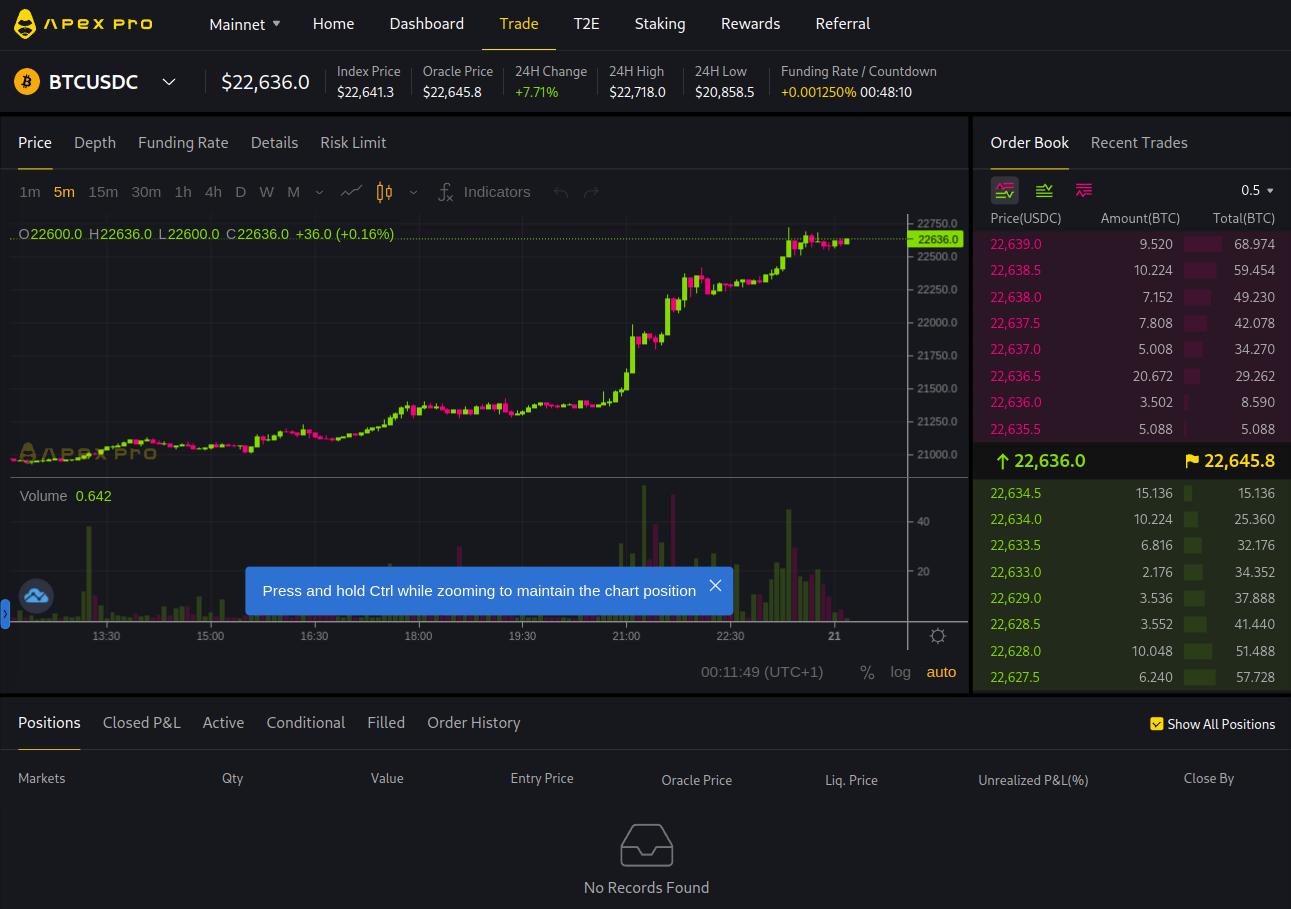
If you need a referral link: https://pro.apex.exchange/trade/BTC-USDC/register?affiliate_id=46&group_id=83
My referral code is: 46
In my opinion, this is the best DEX for trading bitcoin futures.
They also have a mobile app, Android:
Also, an app for iPhone

Ref code = 46
NFT airdrop
Backed is a decentralized NFT lending platform designed to empower users in the DeFi space.
It allows users to utilize the NFT ecosystem and leverage their existing tokens in the process.
Users can mint their own soulbound (non-transferable) NFTs that reflect their activity on the Optimism platform through the platform.
In addition, Backed also provides users with some tokens if they are among the owners of NFTs with the most features.
This token reward is meant to encourage users to increase their activity on the platform.
To bridge your ETH to Optimism, I used https://synapseprotocol.com/
Visit https://www.withbacked.xyz/community
Become an affiliate of this newsletter.
Receive 50% of the recurring commission every month
You get a revenue split, which seems fair to me, as compensation for promoting/sharing the newsletter with others.
Payouts can be in crypto or through a bank.
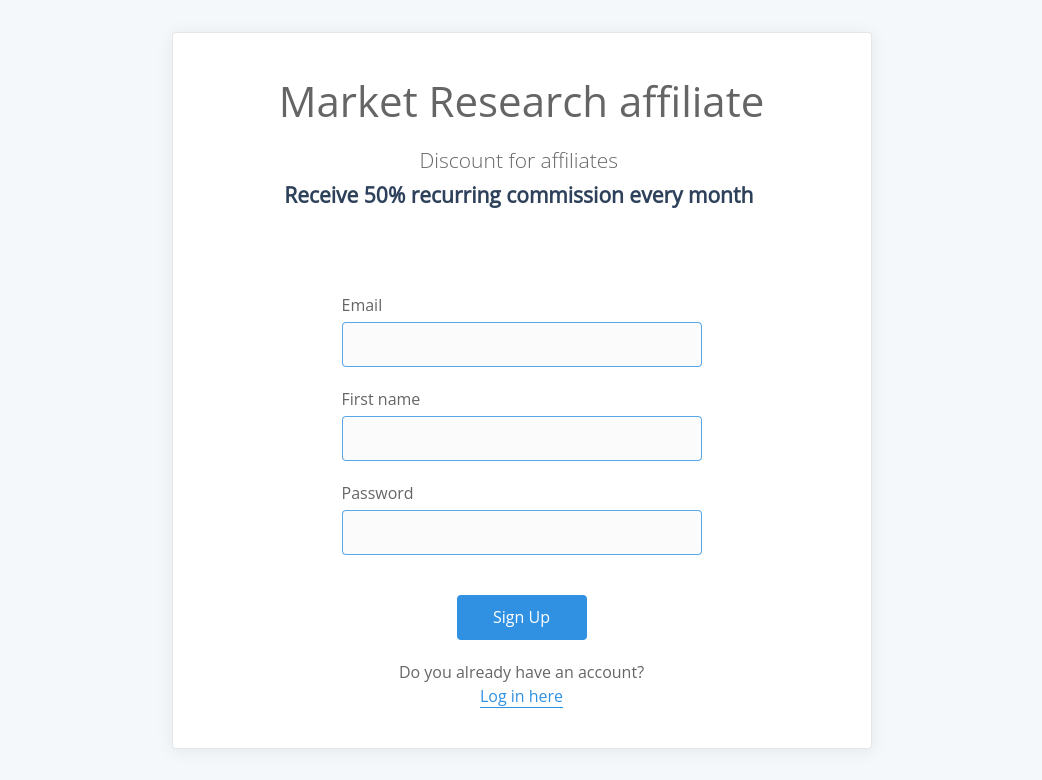
Newsletter affiliate
Receive 50% of the recurring commission every month
Basically, you get a revenue split, which seems fair to me as compensation for promoting/sharing the newsletter with others.
